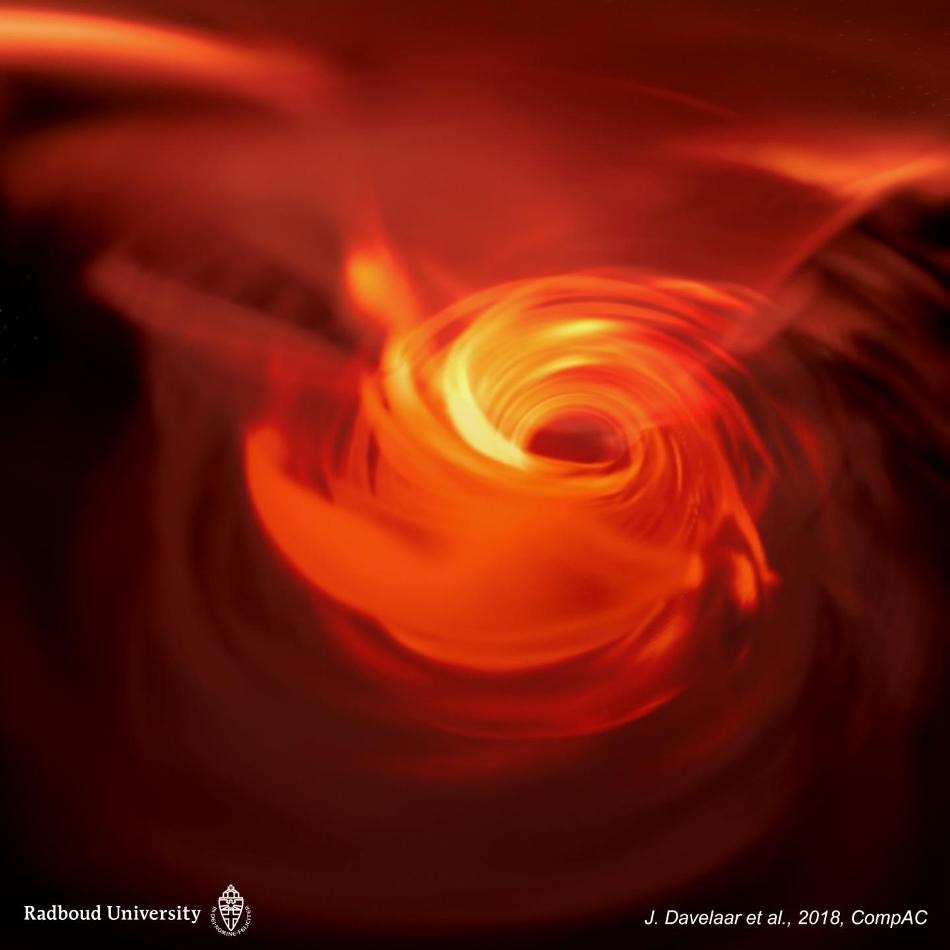Nov 19 2018
For the first time, scientists have visualized Sagittarius A*—the black hole at the middle of the galaxy—in virtual reality (VR) simulation. The details of the study have been reported in an article published in the open access journal Computational Astrophysics and Cosmology.
 The black hole at the center of our galaxy, Sagittarius A*, has been visualized in virtual reality for the first time. The details are described in an article published in the open access journal Computational Astrophysics and Cosmology. (Image credit: J. Davelaar, 2018)
The black hole at the center of our galaxy, Sagittarius A*, has been visualized in virtual reality for the first time. The details are described in an article published in the open access journal Computational Astrophysics and Cosmology. (Image credit: J. Davelaar, 2018)
Recent astrophysical models of Sagittarius A* were applied by researchers at Radboud University, The Netherlands and Goethe University, Germany to produce an array of images that were subsequently put together to produce a 360° virtual reality simulation of the black hole, which can be visualized on extensively available VR consoles. According to the authors, this kind of virtual reality simulation can prove useful for analyzing black holes.
Our virtual reality simulation creates one of the most realistic views of the direct surroundings of the black hole and will help us to learn more about how black holes behave. Traveling to a black hole in our lifetime is impossible, so immersive visualizations like this can help us understand more about these systems from where we are.
Jordy Davelaar, Study Corresponding Author, Radboud University
In addition, the scientists proposed that the virtual reality simulation may help in encouraging both the general public and children to take a keen interest in astrophysics.
The visualisations that we produced have a great potential for outreach. We used them to introduce children to the phenomenon of black holes, and they really learned something from it. This suggests that immersive virtual reality visualizations are a great tool to show our work to a broader audience, even when it involves very complicated systems like black holes.
Jordy Davelaar, Study Corresponding Author, Radboud University.
We all have a picture in our head of how black holes supposedly look, but science has progressed and we can now make much more accurate renderings—and these black holes look quite different from what we are used to. These new visualisations are just the start, more to come in the future.
Heino Falcke, Professor, Radboud University.